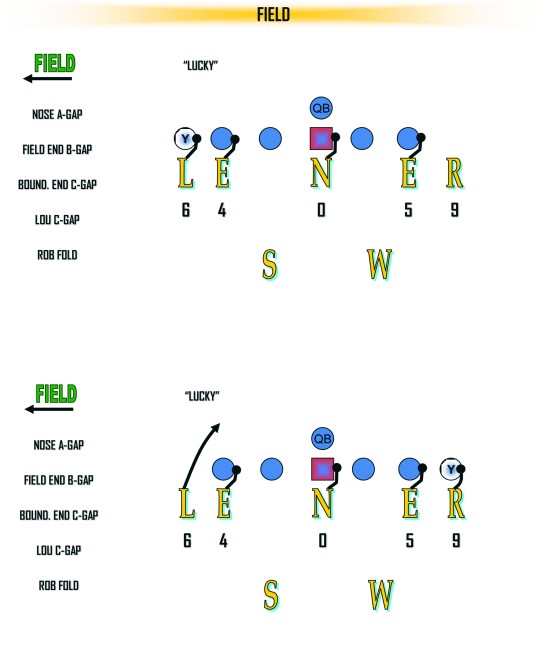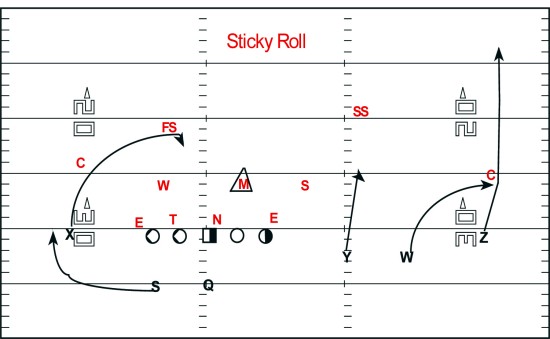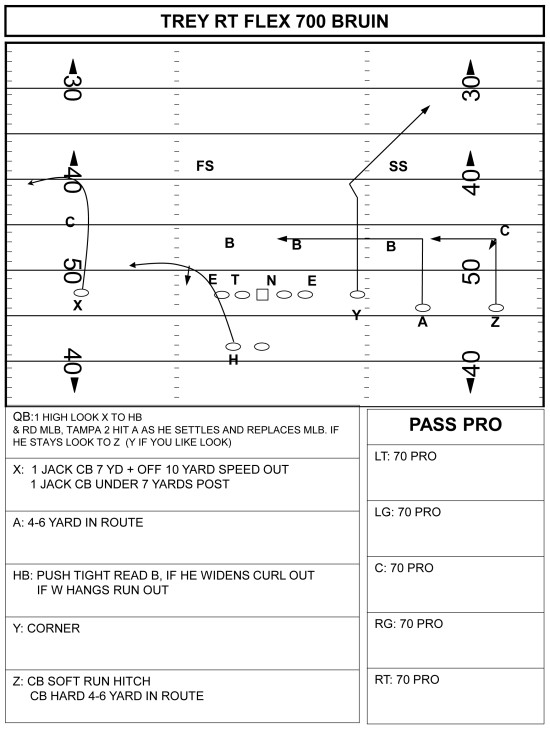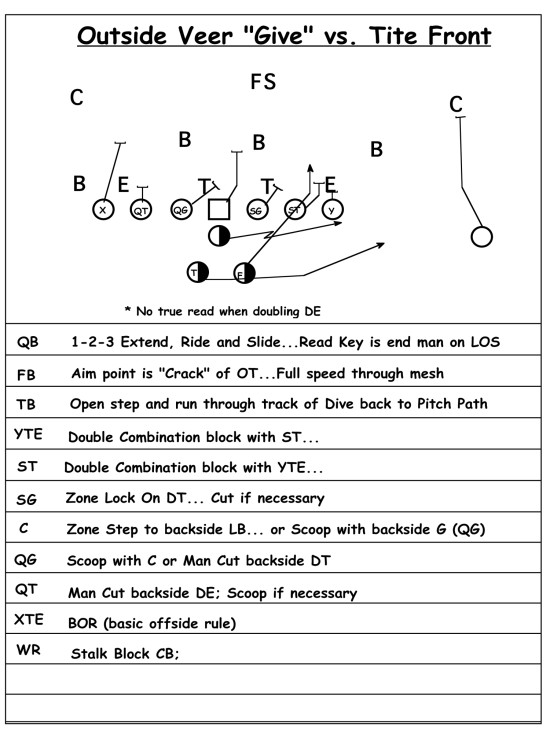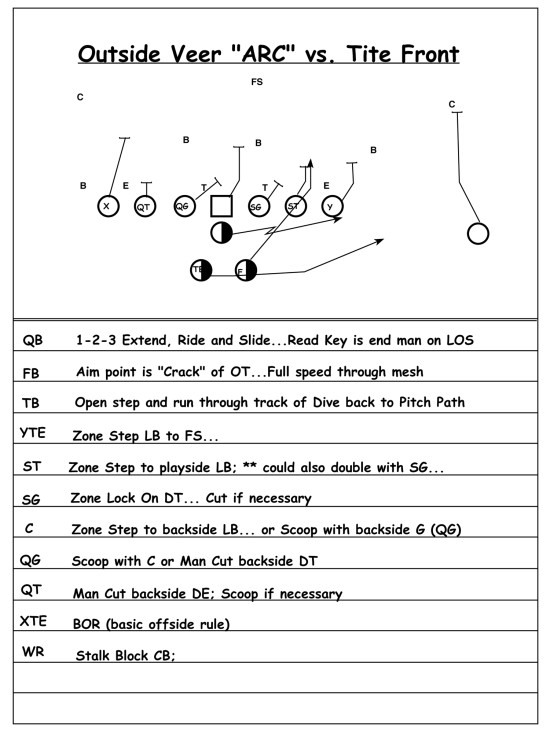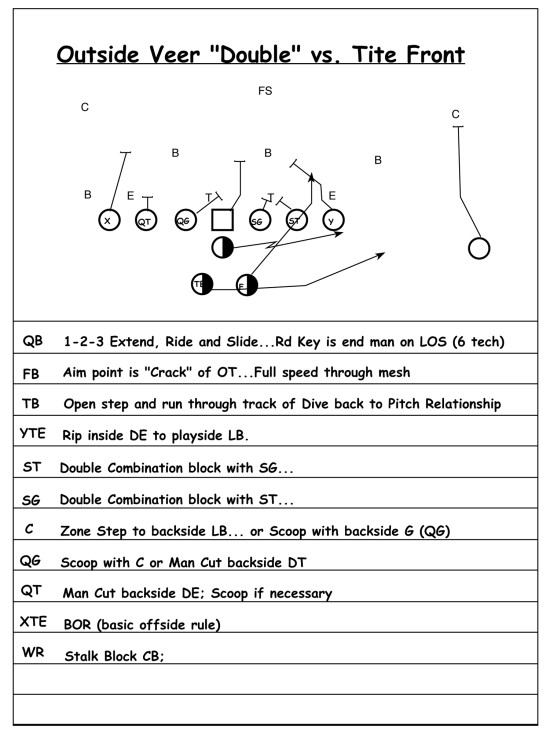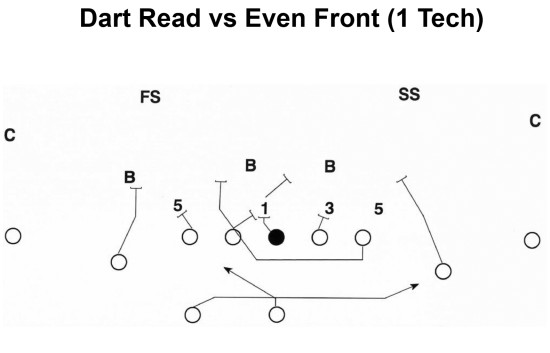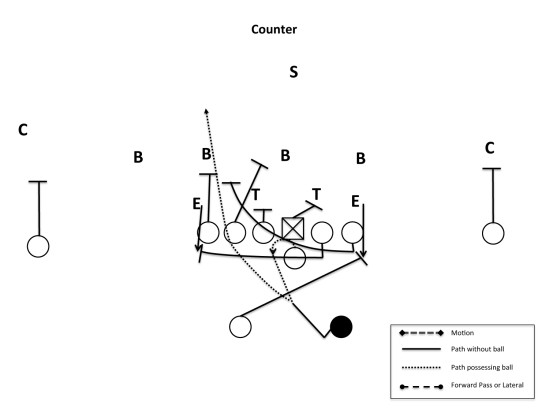Article CategoriesAFM Magazine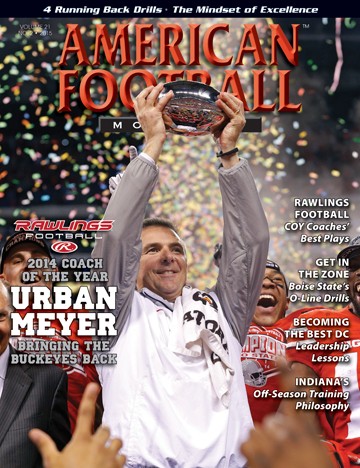
|
Rawlings Football 2014 College and High School Coaches of the Yearby: AFM Editorial Staff© More from this issue Urban Meyer It was supposed to be a relatively straightforward formula. Any team with designs on winning a national championship should flex its muscles early in the season, stay relatively healthy, especially at the skill positions, and play its football in the Southeastern Conference. Somehow, Urban Meyer and the Ohio State Buckeyes did not come close to following that formula, yet the team pulled off one of the most memorable championship runs in recent history. For the leadership Meyer displayed in overcoming multiple obstacles, defying the odds, and proving the experts wrong, he has earned the Rawlings Football FBS Coach of the Year honor. Not only did Ohio State prevail in the first-ever College Football Playoff despite being the fourth seed out of four teams, Meyer became only the second coach to win FBS Championships at multiple schools and, at 50, the youngest to win three titles. In just three seasons, he turned around a Buckeye program coming off their worst record in 20 years and suffering under NCAA penalties. With only three losses in those three seasons, he has returned Ohio State, and the Big Ten by association, to respectability in college football. To accomplish that, Meyer had to overcome significant obstacles along the way in the 2014 season. First, the Buckeyes took a heavy blow when first-team quarterback and Heisman Trophy candidate Braxton Miller went down with a shoulder injury before the start of the season. Backup quarterback J.T. Barrett stepped in. The Buckeyes struggled early when they lost at home to Virginia Tech in the second game of the season. Ohio State was roundly denigrated by fans and media alike after an average Hokie team came into the Horseshoe in Columbus and scored 35 points against the Buckeyes. While it was an early season loss, pundits and college football aficionados raked the Buckeyes over the coals because they came from the “weak” Big Ten, and the perception was that they could not compete with the elite teams in the country. That may have been the case in early September, but Meyer was not about to stand still and accept mediocrity or excuses. Barrett blossomed into a bona fide star in his own right, leading the Buckeyes to nine wins in their next nine games while the revitalized offense averaged 48 points per game. Barrett got better each week and his ability to make big plays with his legs gave the Buckeyes an option. He gained 938 rushing yards during the season and averaged 5.5 yards per carry. He had the ability to make big plays when the pocket broke down or on designed rushes, and that allowed Ohio State to put big numbers on the board throughout the season as the Buckeyes dominated the Big Ten. Misfortune struck the team again when Barrett was hurt in the regular-season finale vs. Michigan. Meyer was forced to turn to his third QB – untested freshman Cardale Jones. Under nearly all circumstances, playing with a third-team quarterback would eliminate any team from playing for the national title, but Ohio State was not just any team. Injuries and problems tend to cause divisions or fractures on a team, but that was not the case with the Buckeyes. “Not one time have I ever heard an offensive player criticize a defensive player or a special teams player, and the same with the coaching staff,” Meyer said. “Adversity, it’s how you respond to adversity, that’s in your life, and our guys have been trained how to do it, but it’s not that easy. You can train however you want. These guys have great heart for each other. A lot of people say that. Very few back it up. These guys backed it up.” Meyer’s team simply got better after that loss to Virginia Tech, and the Buckeyes established themselves as one of the most improved teams in the country as the season moved along. However, after Barrett went down against the Wolverines, it seemed the Buckeyes chances of landing in the nation’s top four and earning a spot in the first NCAA college football playoff had evaporated. Their Big Ten pedigree was weighing them down, and they had just one game – the Big Ten title game against Wisconsin – to sway those committee members who would make the call. Jones may have been untested, but he was big, strong and a powerful thrower. To say that he and the Buckeyes rose to the occasion against Wisconsin would be an understatement, as Ohio State rolled to a 59-0 victory over the Badgers. That remarkable performance got them into the four-team tournament for the national title. Very few predicted an Ohio State upset over heavily favored Alabama in their semifinal game, yet Meyer’s Buckeyes handed Nick Saban’s Crimson Tide a 42-35 loss. Twelve days later, again as underdogs, they took apart Oregon 42-20 in the College Football Playoff National Championship Game. While Cardale Jones’ story and his ability to rise to the occasion cannot be overstated, Ohio State’s 4-3 defense made big stops at key moments against Alabama and limited Heisman Trophy winner Marcus Mariota of the Ducks. Meyer has always been a tough and demanding coach, but he did not hesitate to let his players know how much he supported them. “I love my players. This team wasn’t supposed to do this [win a national title], but they fought through adversity, they got stronger and stronger and stronger, and this is a great team,” Meyer said. “We finished the year a great team. I don’t want to get over-dramatic, but it’s as improved a football team, and I’ve watched football for a long time, from Game 1 to Game 15. I’ve never seen anything like it.” That’s what coaching is all about, and it helped Meyer earn a national championship with the Ohio State Buckeyes. And the Rawlings Football FBS Coach of the Year award for himself. FCS The Bison found themselves trailing the Iowa State Cyclones by a 14-0 margin, and this was not the way Klieman and his coaching staff envisioned the season starting. That’s when running back John Crockett made the first of many statement plays during the season. He bolted 80 yards for a touchdown, and the Bison were off and running in the game – and the season. They came back to register a 34-14 road victory in Ames, Iowa, and the tone was set for another run at the FCS Championship. The team also rallied to beat Western Illinois in its Missouri Valley Conference opener, and that’s where the team developed it’s “Win the Next Play” mentality. They used that credo to get to the top of the conference. Klieman, in his first year as head coach at North Dakota State, guided his team to a 15-1 record in winning the school’s fourth-straight FCS title. That helped him earn the Rawlings Football FCS Coach of the Year honors. The Bison survived the grueling five-round FCS playoff series and earned the championship with a 29-27 victory over Illinois State. After the Redbirds had rallied to take a late fourth-quarter lead, North Dakota State won the game on quarterback Carson Wentz’s five-yard TD run with 37 seconds remaining. Klieman’s team used a pro-style, West Coast offense and employed a Tampa 2 defense. The North Dakota State senior class went 58-3 over its four years and earned four titles. Klieman took over from Craig Bohl, who moved on to the head coaching position at Wyoming. “It started a year ago in January when we returned from Frisco (TX) and the championship game and got everybody together and said, hey, embrace the change,” Klieman said. “We’re going to have a new voice in front of the room and new challenges, new coaches, new coordinators. But the Bison tradition and Bison culture wasn’t going to change.” Klieman took on a job that included the greatest expectations. He didn’t blink, and he has added another title to the North Dakota State legacy.
North Dakota State: This is our Power-Wk. play vs. two different fronts and coverages. It’s a classic power scheme where the running back stays tight to the power with violent down blocks on the B and A gap defenders. In the end, the Mavericks irresistable force was unable to overcome the ThunderWolves immovable object, giving CSU-Pueblo a 13-0 victory and the school’s first national championship in any sport. It also earned Wristen the Rawlings Football Division II Coach of the Year honors. Wristen’s team faced several challenges along the way. “First of all, we knew we had a chance to be pretty good from the start of the year,” Wristen said. “Then we faced some adversity through the season and we were able to fight through it. Then, our kids really played well at the end of the year and that made it rewarding and fulfilling because we were able to accomplish what we set out to do.” While the championship run for the ThunderWolves culminated with the shutout of Minnesota State in which they held the Mavericks to 265 total yards, the turning point for the season came after CSU-Pueblo dropped a 23-22 decision at Fort Lewis in the sixth game of the season. “We had to decide if we were going to go right or go left,” Wristen said. “We made the decision to all go in the same direction together and not splinter. That’s where we learned to fight through adversity and refocus on our goals and our dreams. From that point forward, we were a much more focused team.” The ThunderWolves accomplished their goals with a pro-style offense, one that saw the quarterback line up directly under center most of the time and attack with a hard-hitting style. Defensively, Wristen’s team employed a 3-4 scheme that used speed and quickness as its basic tools instead of subterfuge. Wristen believes that the key to the championship run was the ThunderWolves’ ability to play against one opponent every week – and not against itself. “We didn’t want to beat ourselves by turning over the ball,” Wristen said. “We wanted to force turnovers and we did that. “We believe that defense wins championships, offense manages the game and special teams gives us a chance to make big plays.” If he does not have a tight end on his side, he will align in a ghost 6 technique. On the snap of the ball the outside linebacker to the side of the ball will stunt to a 6 technique and play the C gap. The end to the call side will stunt to a 4i technique and is responsible for the B gap. The nose will stunt to a backside shade and play the backside A Gap. The backside end will stunt to a 5 technique and is the C gap player on the backside. The inside backer will read the guards for their initial reaction. The Sam linebacker is responsible for the reduction side A gap to outside scrape. The Will linebacker is responsible for the backside B gap to scrape. We will play cover 3 behind it to establish an 8 man box. The safety to the call side will roll to a 5-yard depth from the LOS and will be 4-5 yards outside the EMOLS depending on formation. The safety, as well as the non-callside outside backer is responsible for the D-gap, is the force player on run to him and the boot, counter, reverse cutback player on the backside; he will fold on any run away from him. Wisconsin-Whitewater has won 32 straight games and defeated an explosive Mount Union team 43-34 in the Amos Alonzo Stagg Bowl to claim last December’s title. Leipold then accepted an offer to become the head coach at the University of Buffalo. He leaves Wisconsin-Whitewater with a staggering 109-6 record. Leipold earned the Rawlings Football Division III Coach of the Year honors as a result of his team’s consistency and championship. The Warhawks were challenged dramatically by Mount Union, but their unbeaten streak nearly came to an end in the final game of the regular season against lightly regarded Wisconsin-River Falls (3-7). In that game, the Warhawks let a 21-12 second-half lead slip away and River Falls rallied to take a 25-21 lead with 1:20 remaining. However, quarterback Matt Behrendt threw a 31-yard touchdown pass to Justin Howard with 26 seconds remaining and Wisconsin-Whitewater survived 28-25 to move into the Division III playoffs with a 10-0 mark. Mount Union took a 31-30 lead over the Warhawks in the third quarter of the championship game, but Behrendt responded with a 75-yard TD pass to Dennis Moore, and Wisconsin-Whitewater added two field goals to clinch a 43-34 triumph. Strategically, Leipold and Wisconsin-Whitewater struck an early blow by choosing to receive the opening kickoff after winning the coin toss. The Warhawks scored on the possession, and that marked the first time Mount Union had trailed all season. That deficit appeared to confound Mount Union. Wisconsin-Whitewater got it done with its multiple pro style offense and basic 4-3 defense. Leipold’s philosophy is that his team could use basic styles and dominate as long as its execution was superb. Leipold now tries to build the FCS Buffalo Bulls program, and he leaves the Wisconsin-Whitewater program to Kevin Bullis. He will always look back at his time with the Warhawks with pride. “It’s been very emotional, and it will continue to be,” Leipold said. “This is where I grew up. This place will always be special.” Southern Oregon doesn’t just like to play at a fast pace on offense. The Raiders like to play with “ludicrous speed and plays with pinpoint precision and execution.” Those words come from head coach Craig Howard, who took the term “ludicrous” from the 1987 Mel Brooks’ movie “Space Balls.” During the 2014 season, Howard got exactly what he wanted as Southern Oregon went 13-2 and won the NAIA championship. During the process, the Raiders scored 45.7 points per game with a no-huddle, spread offense that may set the standard for explosive play. Howard’s goal is to average 100 offensive plays per game and exhaust his opponent. The Raiders carried the same kind of philosophy on defense with their attacking, swarming and gang-tackling defense. Southern Oregon was on top of its game during the NAIA Championship Series when the team went 4-0, and won each of those games by an average score of 51 – 34. The Raiders’ performance was even more meaningful to Howard because he was coaching just 30 miles from where he was born and raised in Grants Pass, Oregon. “It was the culmination of four years of planning, recruiting and developing a football program that could compete on the national level in football.” His team’s performance helped Howard earn the Rawlings Football NAIA College Coach of the Year Honors. The turning point came in the second round of the NAIA Championship series, when the Raiders traveled to Helena, Montana to play top-ranked Carroll College. The two teams had split two earlier games, and Carroll appeared ready to advance as it took a 35-18 lead into the fourth quarter. However, Southern Oregon played its sharpest football in blizzard conditions as it overcame the deficit and recorded a 43-42 victory. “Those were the toughest conditions I have ever seen in 40 years of coaching football,” Howard said. After that victory, Southern Oregon defeated St. Xavier (IL) 62-37 on the road to advance to the NAIA Championship game. The Raiders went to Daytona Beach, and pounded Marian (IN) 55-31 in a game that saw them take the ball away from their opponents eight times. “We followed our plan and we won a national championship,” Howard said. “It was a storybook season.”
Even though the Cardinals were 6-0 at the time, they played a miserable first half that saw them trail by 21 points as the team was victimized by four turnovers, a blocked field goal and a snap over the punter’s head. A win looked like it was out of the question, but the Cardinals trimmed the margin to 14 by halftime and scored the tying touchdown on the last play of the game. They kicked the winning extra point with no time left on the clock. “We were confident before that game, but the finish gave our team a feeling of invincibility,” said Smiley, the Rawlings Football Junior College Coach of the Year. The comeback victory over Blinn was their signature win. But the Cardinals have been known for their ability to play well from behind during their 21-game winning streak in 2013 and 2014. The team adopted “Never Flinch” as its motto, and the team lived up to it by winning the Heart of Texas Bowl 27-24 over Coffeyville Community College and earning the National Junior College championship. Trinity Valley (Athens, Texas) used a multi-formational up-tempo offense to create big plays throughout the season. The Cardinals broke the NJCCA record for total offense with 7,778 yards and they scored an eye-opening 95 touchdowns while averaging 58.7 points per game. The Cardinals used a 4-2-5 defense that employed 3-4 principles. Trinity Valley led the conference in total defense, points per game, yards per game, passing yards per game and fumble recoveries. Linebacker Cortney Finney, also was named the NJCAA Defensive Player of the Year. Their success on both sides of the ball made it a year to remember for Smiley. “The ability for a group of players, coaches and staff to come together and all believe in and execute the plan we have in place made this year so fulfilling,” Smiley said. “Both on and off the field, everyone involved invested in the process and focused on what they could do to make this season special.” National High School Coach of the year Tony Sanchez Bishop Gorman high School (NV) It was a dream season for head coach Tony Sanchez and the Bishop Gorman Gaels. Not only did they go 15-0 and win the Division I Nevada State Championship, they did it in style as they defeated a strong Reed High School team by a 70-28 margin in the title game. Reed gave Bishop Gorman a huge fight in the second quarter, as they rallied from a two-touchdown deficit to tie the score at 21-21 four minutes before halftime. However, the Gaels scored 14 more points before halftime and then rolled in the second half, closing the game with a 49-7 run. Sanchez and his players were never worried. Bishop Gorman had been tested by a grueling schedule against strong national teams, and the team was loaded with confidence. “You put yourself in those uncomfortable situations (tough early-season games) so when these things occur, your kids don’t waver,” Sanchez said. The state championship and the dominance Bishop Gorman showed all season helped Sanchez earn the Rawlings Football National Coach of the year honors. That doesn’t mean there weren’t some tough spots during Bishop Gorman’s 15-0 season. In mid-September, Bishop Gorman trailed California powerhouse Centennial on the road by 14 points in the fourth quarter. There was no hesitation as Bishop Gorman charged back with two touchdowns. Sanchez wanted to capitalize on his team’s momentum by going for two and the win following the second touchdown, rather than risk overtime. “We were having a hard time stopping them,” Sanchez said. “We had just come back from that huge deficit and thought we had a play that could work.” Quarterback Tate Martell hit receiver Alize Jones with the conversion, and Bishop Gorman had a 43-42 victory. Sanchez thought that game was an indicator of what his team could accomplish by the end of the season. “I don’t know if it was a turning point but what really defined this team was the Corona Centennial game,” Sanchez said. “We were able to regroup and find a way to win. Nobody panicked and everyone fully expected that we would come back and win. The toughness and confidence they showed was amazing. “Also, after beating our sixth straight national opponent in six straight weeks was a task not many believed we could accomplish. It was a really special moment for this team and really for all of the former players that helped us get there.” Sanchez’s impressive performance inspired UNLV to hire him as their head coach. Division I college football teams rarely look to high school coaches to turn their programs around, but the Rebels like Sanchez’s direct approach. Asked what he needs to turn the UNLV program around, and Sanchez was short and to the point. “I just need some junkyard dogs,” he said. Sanchez certainly had those type of players last season at Bishop Gorman, and they made the season memorable and noteworthy. “I think the thing that sticks out is the schedule we chose to play and the way we were able to make plays at crucial times in those big games,” Sanchez explained. “This season really was about finishing what we started. Each week we got better and better at the little things. We practiced harder and smarter, we competed in the off season, we did a better job in the classroom. “All of that showed up in the big games at crucial times. There are lots of talented teams and lots of great individual players out there. The two most difficult and most important things the entire staff hammered home with this group was playing for the name on the front and always being the more disciplined team on and off the field.” Bishop Gorman ran a Pro-Style offense with multiple formations that was quite balanced. The Gaels ran for more than 3,600 yards and passed for more than 3,200. Defensively the Gaels ran a base 4-3 defense that included a number of pressure packages that overwhelmed opposing offenses. The key to Bishop Gorman’s success on defense was its physical nature that dominated most opponents. If Sanchez is capable of inspiring the same kind of effort and physical play at UNLV, he has a chance to be the rare coach who can transfer his success at the high school level to the FBS.
Bishop Gorman - Our ‘Trey Right Flex 700 Bruin’ has been an effective play for us. The QB’s first option is a high look to the X receiver. But he still has the A, Y, and Z receivers as well. The H back is also an option as he runs a curl out. East However, Centreville rallied to tie the game and send it to overtime. It could have all slipped away for the Dolphins and head coach Chris Scott, but running back Jaason Lewis scored the winning touchdown in the extra session that gave Ocean Lakes a 30-24 victory, a state championship and a 14-0 record. Scott earned the Rawlings Football East Region Coach of the Year Award as a result of his team’s special year, and he credited his team’s off-the-field togetherness as a big reason behind its success. “As a team we did the Ice Bucket Challenge, and then asked our principals and other athletic teams in the building to do the same,” Scott said. “Then we took a stand against domestic violence and made posters with statistics. As a team we stood outside of a highly populated area during a Halloween event to raise awareness about it. We also marched in the Dress-Up-In-Pink parade to support research for breast cancer. We also marched in the “Light The Night” parade, which supported research for Leukemia. Scott said those off-the-field events brought his team together. Scott said the season came into sharp focus at a team meeting toward the end of the year, when the Dolphins’ linebacker coach rallied the team with a story about being in an accident where his truck rolled into a ditch and started filling with water. He was in a life-threatening situation and he had to fight with every bit of strength he had to save his life. That story, along with another from a Navy Seal Team member helped impress upon the players that they had to raise their level of effort to be “different,” and that’s what it takes to win a championship. Ocean Lakes used a multiple one-back and two-back spread offense that accounted for more than 4,000 rushing yards and 2,500 passing yards. Defensively, the Dolphins used a two-high defense that rotated to a 4-4 front that put eight men in the box. The Wolves were 15-0 last season and will bring a 40-game winning streak into the 2015 season. Simpson has been coaching Buford since 2005. Buford trailed St. Pius 10-0 in the early going, before turning things around with a huge defensive effort. “The defense was just lights out,” Simpson said. “We were playing a great team and it seemed like once we got momentum on our side, something good was going to happen on this day.” Buford was tested early in the 2014 season by Trinity Christian High School and McEachern. Buford had a difficult time getting its offense going against Trinity Christian in the opener and labored to a 17-0 win, and the Wolves were challenged all the way by McEachern in a 27-20 victory. “I’m not sure that there was one turning point to our season,” Simpson said. “This team was very process-oriented and our kids did a great job managing success early in our year. I think our greatest concern was that we might peak too early or become satisfied with the wins over Trinity and McEachern, but our kids kept improving and we had a great finish to the year.” After those tight victories over two solid opponents, Buford kept improving throughout the season. The Wolves’ seniors displayed a hunger in practice and games that impressed Simpson and let him know what they were capable of proving. “We were blessed with another great group of seniors,” Simpson said. “They were great competitors, teammates, and leaders.” Buford used a Multiple-I offense to top the 50-point mark on eight occasions, and their aggressive base 4-3 defense helped the Wolves register five shutouts. Webb City defeated Cape Central 48-21 in the Class 4 Show-Me Bowl state championship game at the Edward Jones Dome in St. Louis. That victory helped Roderique earn the Rawlings Football Midwest Region High School Coach of the Year award. Roderique has a 220-19 career record, and his teams have won nine of Webb City’s 13 state championships. He says he tries not to think about his record or his team’s achievements, because that’s a subject to consider when he retires. “Each and every season is special,” Roderique said. “That’s because it is the last season of high school football for a group of seniors. Some will have the opportunity to play college football, but most will be playing their last year of football. ‘ Roderique said he saw his team come together in the second game of the season when they played Class 6 Rockhurst. In that game, the Cardinals went into Kansas City and came up with a convincing 40-14 victory. Rockhurst scored the first two touchdowns of the game in the first quarter, but Webb City scored 27 points in the second period and rolled to the win. “We felt we had a good chance to become a good team this season, and we became a confident team after that game,” Roderique said. “When we played that way against a powerful team like that, we started to believe in ourselves.” Webb City is a split-back veer team on offense, and the Cardinals play with multiple fronts on defense but they use a base 4-2-5 formation.
Outside Veer “Give” vs. Tite Front - We use multiple schemes for different plays. In most cases, the QB is able to call the scheme at the line of scrimmage. We then have the ability to put ourselves in the best possible play for the defensive alignment. This outside veer play is against an even front alignment.
Westerberg was awarded the Rawlings Football Southwest Region High School Coach of the Year Award for his accomplishments. Winning the state championship while playing in front of a crowd of over 52,000 at the home of the Dallas Cowboys is a thrill, but Westerberg said the most rewarding aspect was watching his team grow and handle the pressure of high expectations with poise. “Seeing the kids handle the pressure and respond to every adverse situation they were up against was rewarding to the coaches,” Westerberg said. “This was truly a team effort. We won games on offense, we won with making big stops on defense, and we won on last second field goals.” The Eagles were an explosive offensive team throughout the season, but their defense had been shaky through the middle part of the season. They gave up 53 points in an early-season victory over Dutch Fork (SC), and allowed 41 points against Plano West on October 31. After that game, the defense played well in six of the last seven games, and that was the team’s turning point. “Probably when we switched defensive fronts and settled down and started to play better defense through the beginning of district and through the middle of the season,” Westerberg said. Allen runs perhaps the most unstoppable Veer offense in all of high school football as the Eagles averaged 49.4 points per game. They played their best defense after they switched to a 4-3.
Dart Read vs. Even Front (1 Tech) - This is a dual read play. We are blocking the outside zone for the running back and the dart play for the QB. He reads the defense end toward the outside zone for the give or keep.
De La Salle (14-0) was under pressure throughout the game and trailed 42-40 before scoring the final 22 points to bring home the championship. The triumph helped Alumbaugh earn the Rawlings Football West Region High School Coach of the Year Award. Typically, De La Salle was loaded with talented players who will go on to play college football and likely become stars at that level. However, Alumbaugh’s players put their individual goals aside and concentrated on the group effort. “We had a great group of kids that really embraced the team concept,” Alumbaugh said. “They committed themselves to making themselves better, but they understood that their efforts we aimed at improving the team.” De La Salle played sharp football from the start of the season when they defeated Jesuit 63-0 in the opener. However, the Spartans had several challenges along the way. “There wasn’t necessarily a turning point,” Alumbaugh explained. “What was impressive, however, was the way that the team persevered when we had two captains go down for most of the year. The two captains that were hurt maintained a huge presence on our team, and the guys around them rallied well and dedicated themselves to filling part of the void left by injury.” The Spartans were a dangerous offensive team running out of the Houston Split Back Veer, and they registered five shutouts while running a hard-hitting 4-4 base defense.
COUNTER - The cornerstone upon which our rushing offense is |
|
| HOME |
MAGAZINE |
SUBSCRIBE | ONLINE COLUMNISTS | COACHING VIDEOS |
Copyright 2025, AmericanFootballMonthly.com
All Rights Reserved




